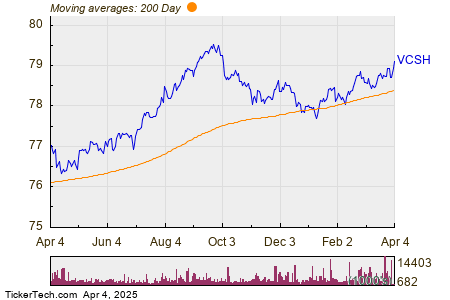Cocoa Prices Show Mixed Trends Amid Supply Concerns and Demand Issues
May ICE NY cocoa (CCK25) closed up +323 (+3.60%) on Thursday, while May ICE London cocoa #7 (CAK25) fell -118 (-1.74%).
Cocoa prices settled in a mixed fashion on Thursday, with New York cocoa climbing to a 1-1/4 month high. Factors contributing to this rise include indications of a weak mid-crop cocoa harvest in West Africa. Rabobank reported that the region’s late-arriving rains have hindered crop growth, leading to disappointing results from recent surveys of cocoa farmers in both Ivory Coast and Ghana. Conversely, London cocoa experienced moderate losses as the British pound (^GBP/USD) surged to a 6-month high, making cocoa priced in sterling less appealing.
Mid-Crop Harvest Conditions Impact Prices
Concern surrounding the Ivory Coast’s upcoming mid-crop is driving cocoa prices higher. This mid-crop, the smaller of two annual cocoa harvests, is usually anticipated to begin this month. Experts estimate that this year’s mid-crop from Ivory Coast will yield approximately 400,000 metric tons (MT), which represents a 9% decline from last year’s 440,000 MT.
Exports from Ivory Coast have also decreased, supporting cocoa prices further. According to government data released on Tuesday, farmers shipped 1.44 million MT of cocoa to ports during this marketing year (from October 1 to March 30), reflecting an 11% increase year-on-year but a noticeable decrease from the 35% rise witnessed in December.
Market Overview: Supply and Demand Dynamics
In recent weeks, cocoa prices have faced downward pressure, falling to a 4-1/2 month low on March 21 due to an improved supply outlook. The International Cocoa Organization (ICCO) predicted a global cocoa surplus of 142,000 MT for the 2024/25 season—the first surplus in four years. ICCO also estimated a 7.8% year-on-year increase in global cocoa production to 4.84 million MT for 2024/25.
The current recovery in cocoa inventories adds a bearish sentiment for prices. Following a 21-year low of 1,263,493 bags on January 24, ICE-monitored cocoa inventories in U.S. ports have rebounded to a 5-1/2 month high of 1,863,172 bags as of Thursday.
Demand Challenges: Insights from Industry Leaders
Concerns regarding cocoa demand persist, particularly as executives from major chocolate manufacturers like Hershey and Mondelez highlight the impact of high prices. On February 4, Mondelez’s CFO, Zarmella, noted a potential slowdown in chocolate consumption, especially in North America, where cocoa demand appears to be declining. Furthermore, on February 18, the company cautioned that chocolate prices could escalate by up to 50% due to soaring cocoa prices, which may dampen chocolate demand. Hershey executives also noted on February 6 that elevated cocoa prices are prompting changes in recipe formulations, substituting cocoa with alternative ingredients.
Adding to the bearish sentiment, Nigeria reported a 27% year-on-year increase in its cocoa exports for January, reaching 46,970 MT. Nigeria holds the position of the world’s fifth-largest cocoa producer.
Historical Context of Cocoa Grindings
High cocoa prices negatively impacted demand in the fourth quarter, as evidenced by quarterly grinding reports. The European Cocoa Association reported a 5.3% year-on-year decline in Q4 European cocoa grindings, dropping to 331,853 MT—the lowest figure in over four years. In Asia, the Cocoa Association reported a similar trend, with Q4 cocoa grindings falling by 0.5% year-on-year to 210,111 MT, again reflecting the lowest levels in four years. North American cocoa bean grindings also saw a decrease, falling by 1.2% year-on-year to 102,761 MT.
Smaller supplies from Ghana, the second-largest cocoa producer, have provided some support for prices. Ghana’s cocoa regulator, Cocobod, revised its 2024/25 cocoa harvest forecast downward for the second time this season to 617,500 MT, a 5% reduction from its earlier estimate of 650,000 MT made in August.
Global Cocoa Market Forecast
The ICCO projected a global cocoa deficit of 441,000 MT for the 2023/24 season—the largest deficit in over 60 years. In addition, the organization indicated that cocoa production for 2023/24 had decreased by 13.1% year-on-year to 4.38 million MT. The current stocks-to-grindings ratio stands at 27.0%, marking a 46-year low.
On the date of publication, Rich Asplund did not have (either directly or indirectly) positions in any of the securities mentioned in this article. All information and data in this article are solely for informational purposes. For further information, please view the Barchart Disclosure Policy here.
The views and opinions expressed herein are the views and opinions of the author and do not necessarily reflect those of Nasdaq, Inc.


